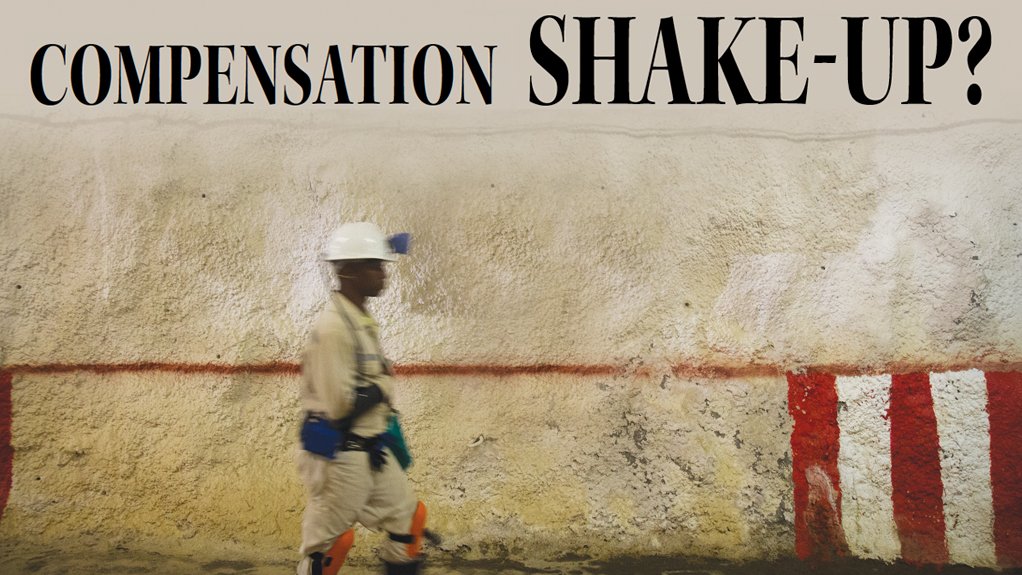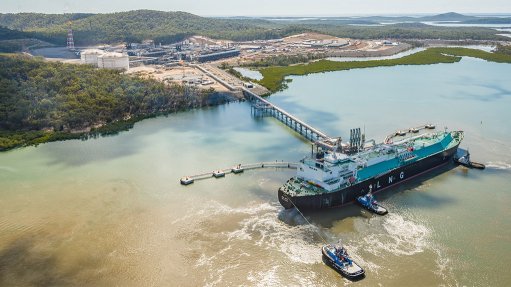Silicosis class action could spur reforms that usher in adequate, effective redress – lawyer
JOHANNESBURG (miningweekly.com) – A decision by the South Gauteng High Court regarding the application for class action certification in the case of South African mineworkers who have contracted silicosis could have significant ramifications for the gold industry and fast-track much-needed legislative reforms to compensate workers who contract occupational lung diseases such as silicosis.
The proposed class action comprises current and former mineworkers who worked in gold mines after 1965 in any mine operated by one of 29 respondent gold mining companies and who have contracted silicosis – a degenerative lung disease caused by high levels of silica dust exposure.
Also included are the dependants of deceased workers who worked in a mine operated by one of these companies after 1965 and contracted silicosis.
Should the application for class action be approved, an estimated 100 000 current and former mineworkers will be eligible to claim compensation from the mining companies.
Human rights lawyer Richard Spoor, who is one of the three lead attorneys in the case, tells Mining Weekly that his firm is also involved in several individual silicosis claims on behalf of former mineworkers. One such claim is for damages in excess of R20-million, if the court rules in favour of the claimant.
He explains that only one successful silicosis claim is required to set a precedent for all claimants and, if there is a successful claim, investor confidence in the gold mining industry will be further dampened.
“A single successful claim raises the spectre of a flood of individual claims that could swamp the industry in litigation. There are a [noteworthy] number of claimants and the value of their claims are very significant,” Spoor asserts, estimating that the undiscounted value of individual claims ranges between R200 000 and several million rands for skilled workers who are crippled by the disease.
He argues that class certification is in the best interests of both the industry and the claimants, as it would mitigate the risk of the industry being overwhelmed by a flood of individual claims and that any compensation paid is distributed equitably among the members of the class. If the litigation is resolved on an individual basis, the poorest claimants and the claimants in the most remote labour supplying areas with no access to lawyers will be unfairly disadvantaged compared with those who do have access.
If the class action is certified, the claimants will issue a summons with a set of particulars detailing their case, after which the defendants will be required to plead and set out the basis of their defence, Spoor notes.
Thereafter, the parties will begin a discovery process, whereby the voluminous records and documents in the possession of the defendants, which are necessary to determine the merits of the claims and the defendant’s companies individual liability, are produced and made available to the claimants.
Spoor states that the class action process will facilitate a settlement, which becomes more likely when both parties develop a better understanding of the strengths and weaknesses of their own and their opponent’s cases. The class action litigation process facilitates a common under- standing of the issues in dispute and the court will further facilitate a common understanding by determining the important issues in dispute on an issue by issue basis. Thereby, the scope is closed for disagreement between the parties on the key issues.
“I believe the claims against the mining companies are very strong and judgment against the mining companies is inevitable. If the industry insists on fighting all the way to a final judgement, it will have huge ramifications for the gold mining industry. It is very much in the industry’s interest to settle the claims before that point is reached,” Spoor asserts.
Thousands of individuals are expected to testify on the unsafe and unhealthy working conditions to which they were exposed underground. He notes that some workers have developed silicosis, including some of the most aggressive forms, such as fibrosis, after having been exposed to silica dust for as short a period as 12 years. This confirms that dust levels were not adequately controlled by the mines, says Spoor, as it is not possible to develop silicosis in such a short time unless there was massive failure to control dust.
Neal Froneman, CEO of dual-listed Sibanye Gold, one of the 29 respondent companies, highlights that the outcome of the court case is currently uncertain, owing to the “many unprecedented procedural and legal points likely to be tested by both sides”.
In 2014, five gold mining companies, including Sibanye, either historically or currently active in gold mining in South Africa, formed a working group to address issues relating to compensation and medical care for mineworkers with occupational lung diseases. The number of companies has since grown to seven, comprising African Rainbow Minerals, Anglo American South Africa, AngloGold Ashanti, DRDGold, Gold Fields, Harmony and Sibanye Gold.
Spoor highlights that the standard rules of court in South Africa are not appropriate to class action proceedings and that it is up to the parties to agree on the process, going forward. “We will sit down together and try to agree the most effective way to try the matter. If we are unable to come to an agreement, it will be up to the trial judge to give directions on the conduct of the trial. The judge will then determine the most expeditious and effective way forward as [he or she] sees it.”
Froneman points out that the matter could take as long as 20 years to finalise, “long after the current leadership of this industry [has retired]”. Therefore, he believes an outcome in favour of the claimants is unlikely to benefit the mineworkers or their next of kin. “Further, hundreds of millions of rands in legal fees will simply be wasted, which – in our view – is in no one’s best interests.”
Spoor says there are a handful of critical issues that need to be determined and, depending on those determinations, the claims will either stand or fall. “Once the key issues are determined and it is clear which way the matter will go, it makes no sense to continue litigating except to the extent that there is some advantage to delay the inevitable.”
Some of the critical issues in dispute include whether a parent company should be held liable for claims in delict involving mines operated by a subsidiary and the content of the common law duty owed by a mine owner to persons employed on their mine.
“The court will also [be required to] make determinations on questions of law. For example, we argue that, as a matter of law, there should be strict liability for breach of the Mine Health and Safety Act pertaining to dust control,” Spoor adds, pointing out that the Act states that mining companies are obliged to maintain dust exposure below levels that could be harmful to people.
“If the court rules that there is liability for a breach of the health and safety laws, the outcome of the case is almost certain. “The defence of the industry at present is that, even if it did violate the health and safety laws and workers were thereby exposed to harmful levels of dust, this does not make them liable in the law of delict,” he points out.
Froneman acknowledges that it is not in the interest of shareholders to have their companies mired in a lengthy legal suit and, in addition, the companies “want to do the right thing”, which is to find a comprehensive solution to occupational lung disease, particularly in respect of compensation and healthcare.
Spoor agrees that a settlement out of court is preferable to a protracted court battle. However, to date, the parties have not been able to agree on a mutually acceptable resolution. Thus, the court process will continue until such time that the claimants and defendants have reached an acceptable agreement.
“Any settlement will be determined by what the claimants can achieve and what the defendants will be able to afford. We would like to see a viable gold mining industry, which is profitable and capable of meeting the development needs of the country while redressing the people to whom they have an obligation,” Spoor says.
Spoor points out that there is widespread concern that the current Occupational Diseases in Mines and Works Act (ODMWA) is “inadequate and ineffective” in providing compensation for former and current mineworkers suffering from occupational diseases.
“This litigation creates an opportunity for legislative reform and we have offered to work with government and the gold mining industry to help bring about the change.”
Communication consultancy, which also represents the working group, Russell & Associates communication executive Alan Fine highlights that the working group is collaborating with the Department of Health compensation commissioner for occupational disease Barry Kistnasamy to address the shortcomings of the ODMWA fund.
Spoor adds: “This litigation creates an opportunity for legislative reform and we have offered to work with government and the gold mining industry to help bring about the change.”
Fine says the seven companies are already in dialogue with government over transferring current and future mineworkers to the more “generous” Compensation for Occupational Injuries and Diseases Act (Coida) compensation system.
The system delivers better benefits to employees who have sustained workplace injuries and contracted occupational illness. It is difficult to directly compare the benefits, as Coida provides a monthly pension and the ODMWA a lump sum, Fine asserts.
He highlights that Coida is deemed more favourable for mining companies, as it “affords the employer protection against civil litigations as a quid pro quo for the high-quality compensation system”.
The working group has also announced that it is establishing a “legacy fund” that will provide additional compensation for eligible claimants in addition to the statutory compensation to which they are entitled. It is not clear how such a fund will operate, but Fine says the group is in discussions with the legal teams of the claimants to address these issues.
Comments
Press Office
Announcements
What's On
Subscribe to improve your user experience...
Option 1 (equivalent of R125 a month):
Receive a weekly copy of Creamer Media's Engineering News & Mining Weekly magazine
(print copy for those in South Africa and e-magazine for those outside of South Africa)
Receive daily email newsletters
Access to full search results
Access archive of magazine back copies
Access to Projects in Progress
Access to ONE Research Report of your choice in PDF format
Option 2 (equivalent of R375 a month):
All benefits from Option 1
PLUS
Access to Creamer Media's Research Channel Africa for ALL Research Reports, in PDF format, on various industrial and mining sectors
including Electricity; Water; Energy Transition; Hydrogen; Roads, Rail and Ports; Coal; Gold; Platinum; Battery Metals; etc.
Already a subscriber?
Forgotten your password?
Receive weekly copy of Creamer Media's Engineering News & Mining Weekly magazine (print copy for those in South Africa and e-magazine for those outside of South Africa)
➕
Recieve daily email newsletters
➕
Access to full search results
➕
Access archive of magazine back copies
➕
Access to Projects in Progress
➕
Access to ONE Research Report of your choice in PDF format
RESEARCH CHANNEL AFRICA
R4500 (equivalent of R375 a month)
SUBSCRIBEAll benefits from Option 1
➕
Access to Creamer Media's Research Channel Africa for ALL Research Reports on various industrial and mining sectors, in PDF format, including on:
Electricity
➕
Water
➕
Energy Transition
➕
Hydrogen
➕
Roads, Rail and Ports
➕
Coal
➕
Gold
➕
Platinum
➕
Battery Metals
➕
etc.
Receive all benefits from Option 1 or Option 2 delivered to numerous people at your company
➕
Multiple User names and Passwords for simultaneous log-ins
➕
Intranet integration access to all in your organisation





















